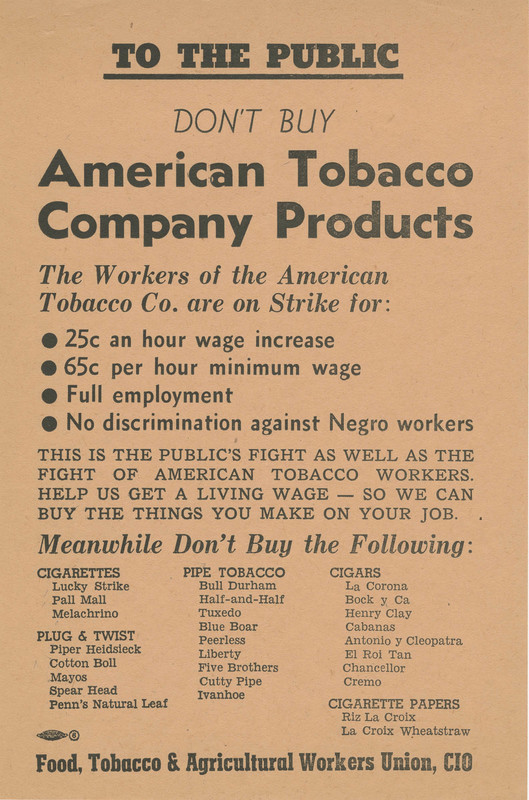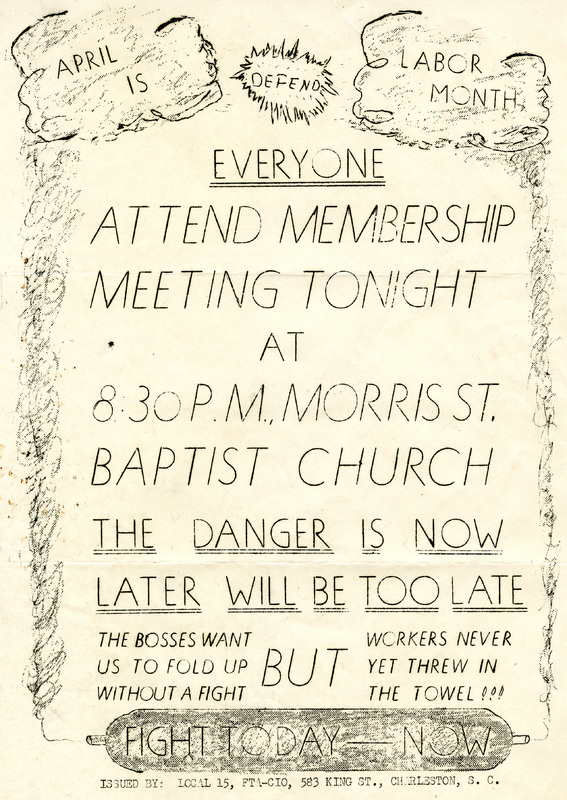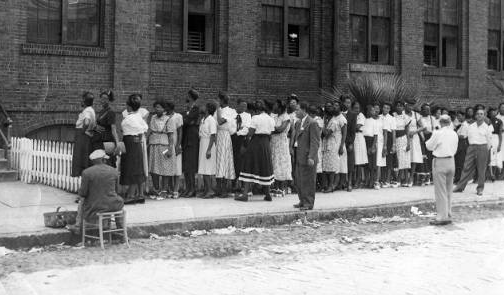The Significance of the 1945-46 Charleston Cigar Factory Strike
By Mark A. Leon
The 1945-1946 Charleston Cigar Factory strike was a pivotal labor movement involving workers at the American Tobacco Company’s facility in Charleston, South Carolina and had a significant impact on post-World War II labor relations in the United States.
Key highlights and summary:
- Duration: The strike lasted from October 22, 1945, to April 1, 1946, lasting over five months.
- Root Causes: Workers protested against the company’s refusal to grant promised pay raises and address racial discrimination, particularly after the firing of an African American employee.
- Demands: Strikers sought back pay, a 25-cent hourly raise, and non-discriminatory hiring practices.
- Solidarity and Impact: The strike saw significant participation from both Black and White workers, marking a rare moment of racial cooperation. It also led to the popularization of the civil rights anthem “We Shall Overcome” during the protests.
- Outcome: The strike concluded with workers receiving back pay, an 8-cent raise, and reduced racial barriers in job positions, highlighting the intersection of labor rights and civil rights in post-war America.
What were the main demands of the Cigar Factory workers during the 1945-1946:
- 1. Back pay: Workers demanded the company issue retroactive pay that had been promised but not delivered.
- 2. Pay increase: Strikers sought a wage increase of twenty-five cents per hour.
- 3. Non-discrimination clauses: They demanded the implementation of non-discriminatory hiring and firing practices at the factory.
- 4. Paid medical benefits: Workers asked for improved health benefits.
- 5. Closed union shop: Strikers wanted a requirement for union membership as a condition for employment.
- 6. Addressing racial barriers: Workers pushed for reduced racial barriers to skilled positions, particularly for African American employees.
These demands reflected the workers’ desire for better wages, improved working conditions, and an end to racial discrimination in the workplace. The strike, which lasted from October 22, 1945, to April 1, 1946, saw participation from both Black and White workers, though the majority were African American women.

What were the impacts on the relationship between the workers and the American Tobacco Company?
1. Modest gains: The strike resulted in some improvements for workers, including back pay, an 8-cent raise, and reduced racial barriers in job positions.
2. Improved working conditions: Workers secured benefits such as mandatory five-minute rest breaks during morning and evening shifts.
3. Racial progress: The strike led to African American employees finally gaining access to mechanic jobs based on merit, breaking down some racial barriers in employment practices.
4. Union recognition: The strike strengthened the workers’ union representation, with Local 15 consistently winning union votes over the management-supported Local 257 in the years following the strike.
5. Ongoing negotiations: In 1952, Local 15 successfully negotiated with factory management for improved health benefits and higher pay, including retroactive sick leave benefits and wage increases.
6. Persistent challenges: Despite these gains, the relationship remained complex. The company continued to face labor issues, and the factory eventually closed in 1973 due to various factors, including industry globalization and declining tobacco use.
The strike marked a pivotal moment in labor relations at the factory, leading to some improvements but also highlighting ongoing tensions between workers and management in the years that followed.

Here are some incredible detailed articles if you want to dive deeper into this story that is so important to the Charleston Narrative
- Introduction · Charleston’s Cigar Factory Strike, 1945-1946 – The Lowcountry Digital History Initiative (LDHI)
- Charleston’s Cigar Factory Strike, 1945-1946 – The Lowcountry Digital History Initiative (LDHI)
- Charleston’s Cigar Factory Strike, 1945-1946 – Gathering Support – LDHI
- The Strike Ends – 1945 – 1946 – The Lowcountry Digital History Initiative (LDHI)
- Aftermath · Charleston’s Cigar Factory Strike, 1945-1946 – The Lowcountry Digital History Initiative (LDHI)
- Conclusion · Charleston’s Cigar Factory Strike, 1945-1946 – The Lowcountry Digital History Initiative (LDHI)
- The Charleston Cigar Factory Strike (1945-1946) • – Blackpast
- NHL Executive Summary Form: Charleston Cigar Factory
Stay connected and subscribe to Charleston Daily.




